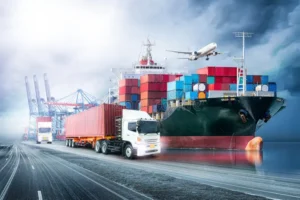Shipping From China to Mexico A Practical Guide to Hassle-Free Cargo Movement

Shipping From China to Mexico has become increasingly important for businesses looking to expand their global supply chain. With Mexico’s fast-growing manufacturing sector and China’s position as a global production hub, efficient logistics between the two countries can significantly reduce costs, improve lead times, and increase competitiveness. This guide provides a practical and detailed breakdown of everything importers need to know, from choosing shipping methods to understanding customs regulations and avoiding delays. By following the right strategies, you can ensure your cargo moves smoothly, safely, and without unnecessary complications.
Understanding the Logistics Landscape Between China and Mexico
The trade relationship between China and Mexico continues to strengthen, with more companies relying on cross-border transport to support manufacturing, e-commerce, and wholesale operations. Importers benefit from diverse transport options, competitive freight rates, and established trade routes. However, the long distance and complex customs procedures mean planning is essential. Key factors influencing logistics performance include shipping schedules, seasonal demand, port congestion, local customs processes, and your chosen freight forwarder.
Main Shipping Methods for Transporting Goods
Sea Freight
Sea freight is the most commonly used option for Shipping From China to Mexico because it offers the best balance between cost and capacity. It suits businesses shipping bulk orders, large cargo, or regular production batches. Importers can choose between full container load and less-than-container load movements depending on volume. Typical transit times vary based on the port of origin and destination, with major routes connecting ports like Shanghai, Shenzhen, and Ningbo to Manzanillo, Lázaro Cárdenas, and Veracruz. Though slower than air transport, sea shipping is far more economical for long-distance trade.
Air Freight
Air freight is ideal for urgent, high-value, or time-sensitive goods. While it is more expensive, it reduces transit time dramatically and supports faster restocking. Air transport connects China’s major airports such as Shenzhen, Guangzhou, and Shanghai with Mexico City, Monterrey, and Guadalajara. Importers often choose air freight for electronics, small machinery, samples, and goods with high profit margins.
Express Courier Services
Express shipping through international couriers offers the fastest delivery times with full tracking visibility. This option is common for small parcels, samples, and urgent shipments. Although it costs more, it provides door-to-door convenience and predictable delivery schedules.
Key Ports and Shipping Routes
Mexico has well-developed port infrastructure to handle cargo arriving from China. Manzanillo is the busiest container port and a primary gateway for Pacific trade routes. Lázaro Cárdenas is another major port favored for industrial shipments due to its deep-water capacity. For shipments going to eastern Mexico, Veracruz serves as a vital entry point. In China, ports such as Shenzhen, Ningbo, Qingdao, and Shanghai are the most frequently used due to their cargo handling capacity and global connectivity. For air shipments, Mexico City International Airport and Shanghai Pudong Airport are primary hubs, offering frequent flights and reliable customs handling.
Factors Affecting Freight Cost
Shipping From China to Mexico depends on various factors that influence freight charges. Cargo volume and weight significantly affect cost, especially for air and express shipping. Seasonal fluctuations, such as holidays or peak sales periods, can increase rates due to capacity limits. Fuel prices, customs regulations, and port charges may also impact the final amount you pay. Choosing a reliable freight forwarder helps secure competitive pricing and reduces the risk of hidden fees Shipping From China to Mexico.
Understanding Customs Procedures and Documentation
Mexico has strict customs regulations, and compliance is essential to ensure hassle-free cargo movement. Accurate documentation prevents delays, fines, or cargo holds. Important documents include the commercial invoice, packing list, bill of lading or airway bill, and certificate of origin. Mexican customs authorities classify goods using the Harmonized System code, determining duties and taxes payable. Depending on your cargo type, you may require additional certificates such as sanitary, phytosanitary, or safety compliance documents. Working with an experienced freight forwarder ensures that all documents are correctly prepared.
Duties, Taxes, and Import Restrictions
Importers must calculate import duties and the Value Added Tax based on product classification. Some goods may also incur special taxes, especially electronics, chemicals, or regulated materials. Mexico also has import restrictions on certain categories, requiring specific permits from authorities. Failing to comply with these rules can cause significant delays. Understanding tariff structures and customs compliance helps keep your shipment on track.
Best Practices for Packing and Labeling
Proper packaging reduces the risk of damage during the long journey. Using high-quality materials, secure pallets, moisture protection, and correct labeling ensures cargo stability during ocean or air transport. Labels must clearly display product description, quantity, weight, and handling instructions. Following international packaging standards prevents customs complications.
Choosing the Right Freight Forwarder
A reliable freight forwarder supports every stage of Shipping From China to Mexico, including route planning, document preparation, customs clearance, and final delivery. Experienced forwarders provide cost-saving solutions, track shipments, and manage communication with carriers and customs authorities. When choosing a company, consider experience, service coverage, response time, and feedback from past clients.
How to Minimize Delays and Ensure Smooth Delivery
Several strategies help ensure a seamless transport experience. Planning shipments early is crucial, especially during high-demand seasons. Consolidating cargo into full container loads reduces risk and cost. Verifying documents before dispatch prevents customs issues. Monitoring your shipment and maintaining regular communication with your freight forwarder allow you to address any problems quickly.
Common Challenges and How to Overcome Them
Shipping From China to Mexico can involve challenges like port delays, documentation errors, unexpected customs inspections, and fluctuating freight costs. Being proactive and well-informed helps minimize these risks. Diversifying transport routes when needed, preparing compliant documentation, and choosing reliable carriers help avoid most common issues. Efficiency in logistics depends on attention to detail and ongoing coordination between suppliers, shippers, and customs agents.
Final Thoughts on Successful Cargo Movement
Efficient shipping ensures your goods reach their destination smoothly and economically. By understanding freight options, customs rules, costs, and best practices, businesses can streamline operations and prevent delays. Whether you are importing retail products, machinery, textiles, or electronics, careful planning and reliable partners make all the difference. Shipping From China to Mexico becomes easier when you follow a structured approach and stay informed at every stage of the process.





